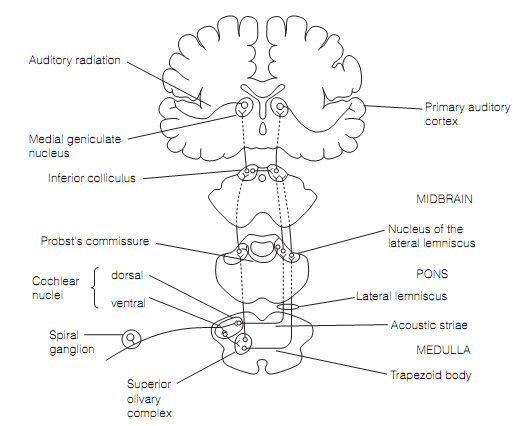Central auditory pathways
Main auditory afferents bifurcate to terminate in both the ventral and dorsal cochlear nuclei. Since the ventral cochlear nucleus axons run to the better olivary nucleus (SON) on both sides and to the contralateral inferior colliculus through the trapezoid body (TB). The SON compares input from the two ears to calculate the location of a sound source. It projects the nuclei of the lateral lemniscus. Dorsal cochlear nucleus sends axons directly to the contralateral nucleus of the lateral lemniscus as shown in figure.

Figure: Central auditory pathways.
The nucleus of the lateral lemniscus projects to the inferior colliculus (IC). The IC relays with the medial geniculate nucleus (MGN) of the thalamus that sends its output through the auditory radiation to the main auditory cortex, AI (Brodmann’s regions 41 and 42) situated in the better temporal gyrus. This is the pathway for aware auditory perception. The largest auditory pathway is contralateral. Though, reciprocal connections among the nuclei of the lateral lemniscus (through Probst’s commissure) and among the ICs, ensure extensive interactions among the input from both ears.Ascending sensory pathways are matched by the descending projections that alter the sensitivity of cochlear afferents.